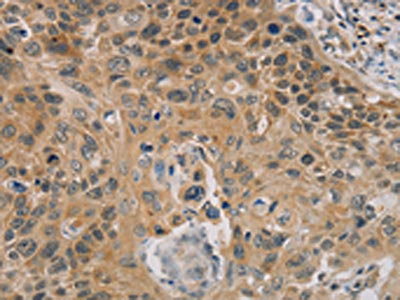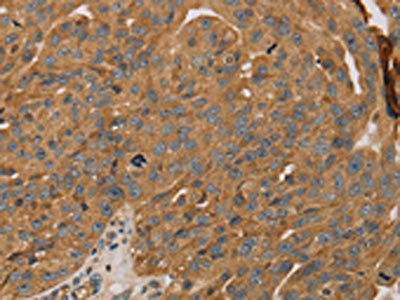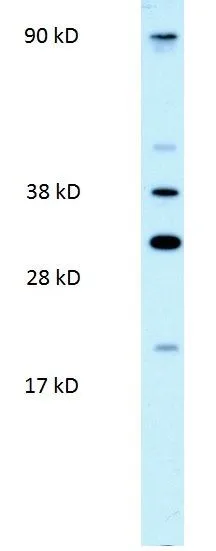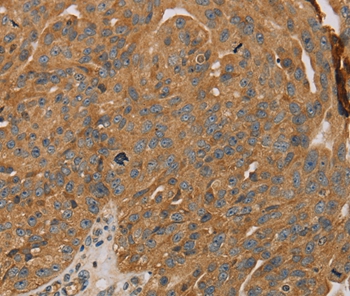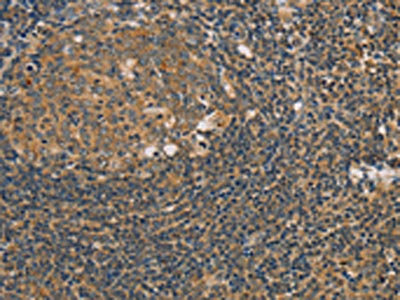
The image on the left is immunohistochemistry of paraffin-embedded Human tonsil tissue using CSB-PA870690(PARP11 Antibody) at dilution 1/20, on the right is treated with fusion protein. (Original magnification: x200)
PARP11 Antibody
CSB-PA870690
ApplicationsELISA, ImmunoHistoChemistry
Product group Antibodies
ReactivityHuman, Mouse
TargetPARP11
Overview
- SupplierCusabio
- Product NamePARP11 Antibody
- Delivery Days Customer20
- ApplicationsELISA, ImmunoHistoChemistry
- CertificationResearch Use Only
- ClonalityPolyclonal
- ConjugateUnconjugated
- Gene ID57097
- Target namePARP11
- Target descriptionpoly(ADP-ribose) polymerase family member 11
- Target synonymsARTD11, C12orf6, MIB006, protein mono-ADP-ribosyltransferase PARP11, ADP-ribosyltransferase diphtheria toxin-like 11, poly [ADP-ribose] polymerase 11
- HostRabbit
- IsotypeIgG
- Protein IDQ9NR21
- Protein NamePoly [ADP-ribose] polymerase 11
- Scientific DescriptionPoly(ADP-ribosylation) is a method of DNA damage-dependent posttranslational modification that helps to rescue injured proliferating cells from cell death. The PARP (poly(ADP-ribose) polymerase) proteins comprise a superfamily of enzymes that functionally modify histones and other nuclear proteins, thereby preventing cell death. PARPs use NAD+ as a substrate to catalytically transfer ADP-ribose residues onto protein acceptors; a process that, when repeated multiple times, leads to the formation of poly(ADPribose) chains on the protein.
- ReactivityHuman, Mouse
- Storage Instruction-20°C or -80°C
- UNSPSC41116161

